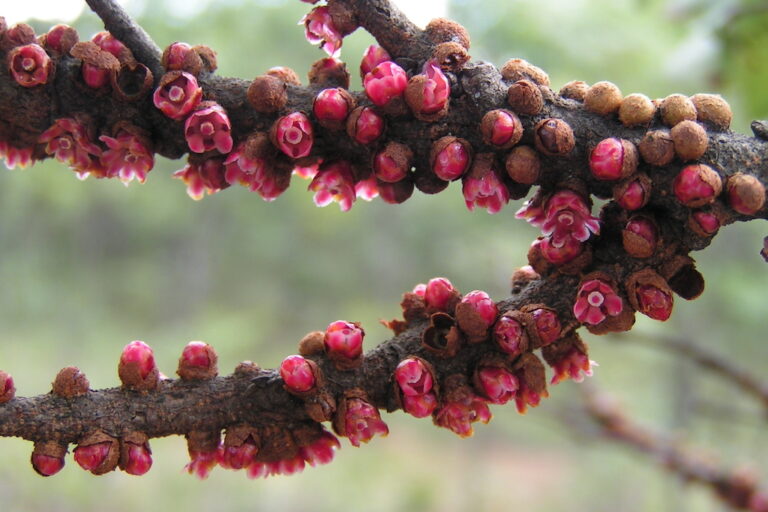- A new study unveils the most comprehensive understanding of the evolutionary history of flowering plants to date.
- The research analyzed 1.8 billion letters of genetic code from more than 9,500 species, clearing up some of the mystery surrounding the rapid rise of flowering plants.
- Some data came from dried and preserved specimens from herbarium collections that are nearly 200 years old.
- To ensure the widest possible use of this data, the tree and all its underlying data have been made openly and freely accessible to all.
After the first flower bloomed on the Earth, flowering plants evolved a staggering diversity and now make up about 90% of all plant life. Charles Darwin called this rapid domination an “abominable mystery.”
A study published today, April 24, in the journal and led by the Royal Botanic Gardens, Kew, unveiled the most comprehensive understanding of the evolutionary history of flowering plants to date.
The research, which analyzed 1.8 billion letters of genetic code from more than 9,500 species, clears up some of the mystery surrounding the rise of flowering plants. Much like a periodic table, this tree of life shows how plants are related.
To ensure the widest possible use of this data, the tree and all its underlying data have been made openly and freely accessible to all through the .

The researchers used 200 fossils to add a time scale to their analyses. They found that early flowering plants experienced an explosion in diversity shortly after their origin, giving rise to more than 80% of the major flowering plant lineages we see today. After that initial burst, the speed at which new flowering plant species appeared slowed down for around 100 million years. Then, about 40 million years ago, when Earth’s climate was cooling down, there was another big jump in the number of new flowering plant species showing up.
The study involved 138 organizations from 27 countries and used 15 times more data than any previous comparable study of the flowering plant tree of life. Some of this data came from dried and preserved specimens from nearly 200-year-old herbarium collections.
The team successfully sequenced a sandwort specimen, Arenaria globiflora, collected in Nepal in 1829. It analyzed extinct plants like the Guadalupe Island olive (Hesperelaea palmeri), which has not been seen alive since 1875.
“In many ways this novel approach has allowed us to collaborate with the botanists of the past by tapping into the wealth of data locked up in historic herbarium specimens, some of which were collected as far back as the early 19th Century,” William Baker, senior research leader of the Tree of Life at RBG Kew, said in a statement. “DNA was not even discovered in their lifetimes! Our work shows just how important these incredible botanical museums are to ground-breaking studies of life on Earth. Who knows what other undiscovered science opportunities lie within them?”

In a led by RBG Kew, researchers estimated that 45% of documented flowering plants and half of all analyzed fungi are at risk of extinction. Scientists think the new flowering plant tree of life can be useful for studying and protecting the variety of life.
To prevent biodiversity loss, we need a detailed and accurate tree of life, Felix Forest, a senior research leader at RBG Kew, told Mongabay in an email. This helps us focus on saving species and groups of species that are evolutionarily unique, along with their special characteristics.
“This new plant tree of life represents a massive leap forward in both our understanding of plant evolutionary relationships and in our ability to protect the evolutionary processes responsible for today’s biological diversity,” Forest said.
Banner image of the parasitic plant Pilostyles aethiopica by Kew’s Sidonie Bellot. This plant lives inside the branches of other plants and is only visible when it erupts into flower. Using a specimen collected in Zimbabwe in 2012, the study found the plant is in the group Malpighiales.
Liz Kimbrough is a staff writer for Mongabay and holds a Ph.D. in Ecology and Evolutionary Biology from Tulane University, where she studied the microbiomes of trees. View more of her reporting .
